
An easy way to describe customer experience is what you or your company do for your customers. This perception, in turn, impacts their behavior and builds memories to drive their loyalty. But is customer experience the ultimate marketing tool? Well, we are about to find out.
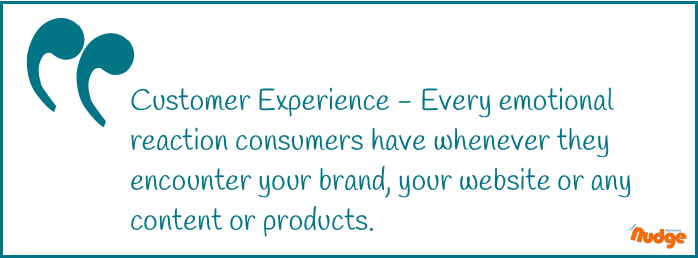
According to Forbes, businesses that focus on customer experience witness an 80% increase in revenue.
Customer experience, especially online customer experience, has quickly emerged and become a top priority for most businesses. As technology advances, there is an increased need for more intuitive user interactions and enhanced usability. And thus, achieving a customer experience that exceeds the customer’s expectations is getting more and more challenging.
In this post, we will understand why customer experience is an ultimate marketing tool and look at ways to boost your customer experience strategy. But before that, let’s begin from the start and define what customer experience is.
What is Customer Experience?
Customer experience includes every interaction that a customer has with your brand. These interactions can be with a company’s brand, mobile app, website, ads, etc., or its physical products, signage, services, sales reps, or any other team member; essentially all the available digital, human, and physical channels.
Customer experience is more than just customer service or swiftly addressing customer queries. It summarizes the entire lifecycle of your customers, closely mapping every touchpoint they have with you.
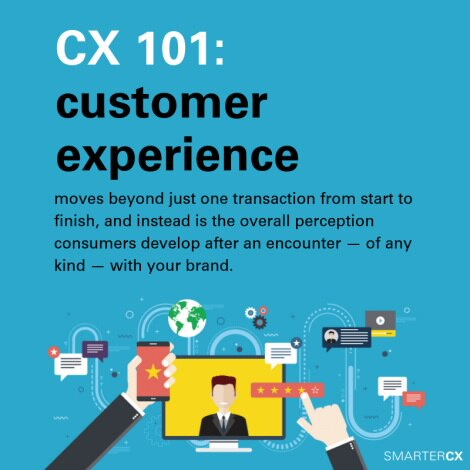
Essentially, customer experience is about showing up when your customers need you. It is about making sure that every interaction they have with your brand is impressive and meaningful and not transactional.
Improving customer experience can enable companies to fulfill their key business objectives, such as driving more sales, converting more leads, and boosting customer lifetime value. Instead of developing strategies that emphasize reaching these business objectives individually, focusing on customer experience in totality can drive results in unison.
How does Customer Experience Enhance Your brand: The Ultimate Marketing Tool
Now comes the primary question, “Is offering a great customer experience significant to enhancing your brand?.” Well, the short answer is YES.
Nowadays, customers have all the power, not the sellers. With growing competition and increased accessibility, customers have many options to choose from. Additionally, the internet has made all the necessary resources available to educate the customers. They can thoroughly research the internet before each purchase decision.
And this is why it is essential to offer a remarkable customer experience and make them want to continue doing business with you. Offering branded and personalized moments at every customer touchpoint has become imperative for businesses.

Tips for Improving Your Customer Experience Strategy
1. Map out the customer journey
This is the first step in fulfilling an exceptional customer experience. Creating a customer journey map for boosting the customer experience is a great place to start. Essentially, it includes outlining the entire customer journey and identifying the interactions at each touchpoint to pinpoint the gaps or improvement areas.
By closely analyzing the customer journey, you can clearly understand the following:
- Customer persona (Who are your customers, and what are their demographics?)
- Customer objectives (What do your customers wish to achieve?)
- On-stage experience (What parts of your business does the customer interact with?)
- Off-stage experience (What must be highlighted, so the customer becomes aware of it?)
- Customer attitudes (How do your customers feel?)
Understanding the customer’s journey is significant to identifying the problems and creating new opportunities to deliver a great customer experience. It also helps the customer support teams to devise varied strategies to reduce friction, boost business relationships, and propel growth.
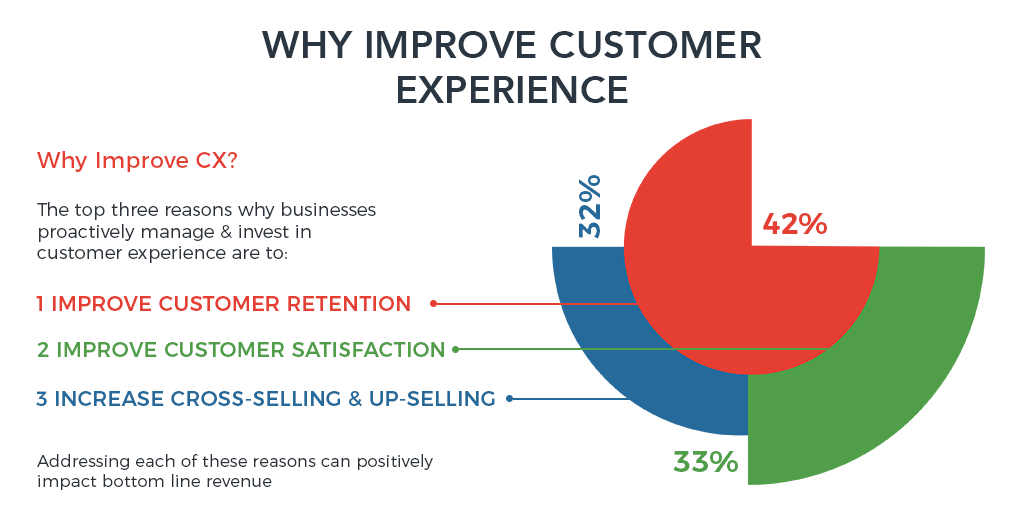
2. Build an omnichannel strategy for a better customer experience
Companies interact with customers via multiple channels, which is positive from a customer’s perspective. However, companies must ensure the same experience and consistent communication across all these channels. Every interaction with your business must feel similar. Otherwise, you can risk your customers feeling frustrated.
Having a seamless journey across all channels, offline and online, is the key to offering a consistent omnichannel customer experience. According to a study, companies that offer robust omnichannel engagement to the customers witness a 9.5% Y-O-Y increase in annual revenue compared to 3.4% for companies that don’t have one.
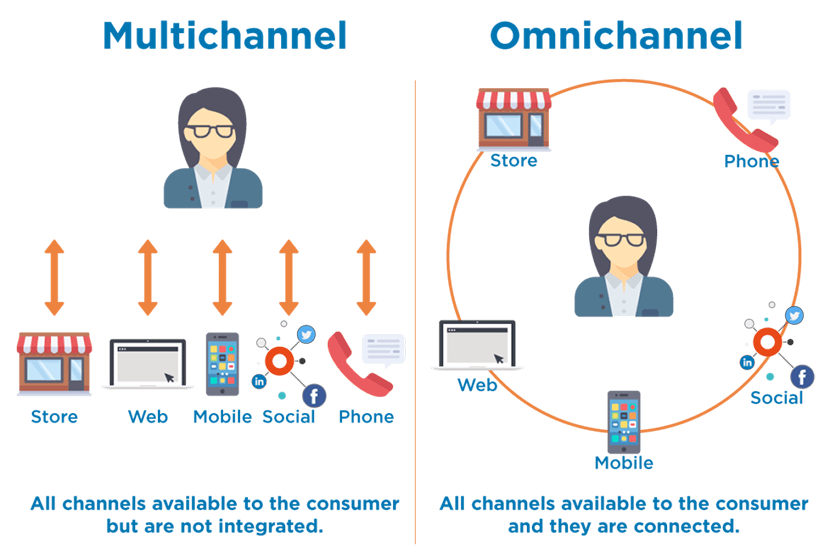
So, make sure to invest in an omnichannel experience. It also helps to understand your customer journey better and gather insights to take action to improve the different aspects of your business.
3. Offer personalized experiences
To use customer experience as your ultimate marketing tool, you must focus on offering personalized experiences. Personalization is crucial to make the customers feel valued and unique, especially from the businesses they purchase from. Personalizing the interactions may help build better relationships with the customers and lead to patronage and repeat transactions.
There are many different ways to personalize your customer interactions. For instance, you can start by getting to know your customers and appealing to their values and interests. You can send them personalized emails to follow up on each transaction. Lastly, you can use their website activity or previous purchases to curate personalized recommendation lists. This will not only keep them engaged but also ensure a delightful experience.
4. Deliver exceptional customer service
To ensure a good offline and online customer experience, you must focus on delivering superior customer service. As per statistics, customer-centric companies are 60% more profitable than companies that do not focus on their customers.
Good customer service escalates customer satisfaction. When customers are happy with your brand, they refer to their friends and family, which helps generate more outstanding sales. So make sure to provide real-time support to all your customers.
You can even use digital customer engagement tools to make the conversations interactive and boost the customer experience. For instance, you can offer instant customer support through live chat and chatbots and improve the resolution time. You can also personalize conversations by leveraging video chat. It helps to identify complex issues and offer practical solutions quickly.
5. Keep your brand messaging clear
Another way to boost your customer experience strategy is by checking on your brand message. Clear brand messaging denotes the underlying value proposition and language used in your copies. If your brand message is ambiguous, your audience will get confused and simply quit the interaction.
So, it is imperative that you understand your target audience and set your brand message and tone accordingly. With the right brand message, your audience can get the correct information about the product that you are selling.

Make sure to keep the prime focus of your brand messaging, both your value and your brand’s purpose. Also, do it in a way that focuses on customer needs or pain points. When your approach is customer-centric, the customers can better relate to your brand. And this, in turn, will improve the customer experience.
6. Train your customer-facing teams to boost customer experience
Online customer experience is the real deal maker or breaker. Your customer-facing teams are the first people your customers will come in contact with. These people offer a lasting first impression of your business. Therefore, it is essential to define a standard for customer interaction that each team member closely follows.
You can conduct frequent training programs to help your marketing, sales, and support teams deliver impeccable assistance. Ensure all these teams have a clear understanding of your product and business, as it is crucial to deal with the customers. With strong product knowledge, they can deal with customer complaints effectively.
Moving on, all team members must demonstrate incredible communication skills. Training the team with basic customer support etiquettes such as empathy and patience helps enhance customer experience and build good relationships.
7. Make use of customer analytics
Studies indicate that 90% of business managers hold that analytics can improve sales.
With many digital channels, collecting relevant business data has become very simple. All online channels offer detailed analytics of your business performance. These channels include your online shop, website, and social media accounts.
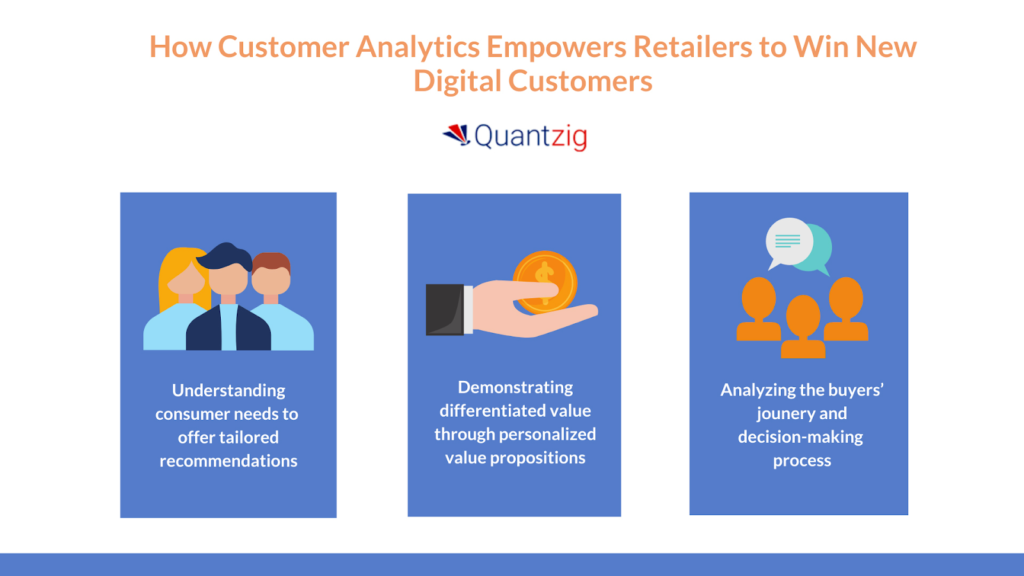
Using data from these channels, you can get concrete figures that reflect your performance using data from these channels. You can measure meticulous demographic, behavioral, and other customer experience metrics.
For instance, once you have the data, you can revise the content on your website if it drives complaints. Alternatively, retailers can use the data to address gaps in customer support processes.
It is safe to conclude that customer experience is the ultimate marketing tool. It is all about anticipating your customers’ needs, wants, and problems in today’s time. Understanding the customer’s behaviors is the surefire way to keep the customers happy and coming back for more.
So make sure to use the tips mentioned earlier to improve your customer experience strategy. Determine the vital areas for your brand to make a positive impression and work on them to boost customer satisfaction.
Key Takeaways
- Customer experience is a holistic approach to engaging the customers and exceeding the expectations they develop about your brand.
- Customer experience does not only focus on a single touchpoint. It goes beyond just one transaction from start to finish and is the overall perception that customers develop after encountering your brand.
- To provide an excellent offline and online customer experience, you must take an empathetic and humanistic approach. Think about how the customers feel as they interact with your brand. Map out their customer journey and note how to improve their encounters.
- Consider an omnichannel approach by being available on different channels, such as chat, voice, email, or text. By showing up to communicate on different platforms, you let your customers know that you are always available.
- Personalize all your brand interactions to make your customers feel unique and valued. Also, deliver a clear and consistent message that tells the customers the desired outcome from your product or service.
- All your customer-facing teams, including the marketing, sales, and support team, must clearly understand your company’s product and brand value. This will help them communicate with the customers in the desired way and provide the most effective solutions.
- Last but not least, map out their customer journey and note how to improve their encounters.
FAQs
Customer experience involves every interaction a customer has with your brand. It encompasses the entire customer journey, closely mapping all touchpoints. By offering a great customer experience, you can retain customers, build loyalty, and generate more sales.
A customer experience strategy includes all plans you devise to offer a positive and meaningful customer experience across every touchpoint. Additionally, it has focused on ways to measure those experiences.
A bad customer experience occurs when a business fails to meet the customer’s expectations. Some of the most common reasons for bad customer experience involve:
1. Unable to understand your customer’s needs
2. Lack of adequate customer support
3. Difficult purchasing processes
4. Slow response times
5. Ignoring customer feedback
There are several metrics to measure customer experience. This includes
1. Customer Effort Score (CES)
2. Customer Retention Rate
3. Customer Satisfaction (CSAT)
4. Customer Churn Rate
5. Net Promoter Score (NPS)
6. Customer Referral Rate
Five tips to improve your online customer experience are as follows:
1. Carefully understand your customer’s behaviors
2. Offer user-friendly designs
3. Ensure omnichannel customer interactions
4. Optimize for mobile
5. Ensure personalized interactions
Latest Blogs
Explore how Google’s 2025 AI search updates triggered ranking chaos. Learn actionable strategies to adapt your SEO for AI Overviews, zero-click searches, and SERP volatility. Stay ahead now.
Learn how to rank on AI search engines like ChatGPT, Perplexity, and Gemini by optimizing your content for authority, structure, and relevance. Stay ahead in AI-driven search with this strategic guide.
Explore the best healthcare SEO services for your medical practice. Improve online visibility and effectively reach more patients in need of your services.
Get your hands on the latest news!
Similar Posts

Artificial Intelligence
5 mins read
Enhance Your Writing Efficiency: Must-Have Content Writing Tools for Marketers

Marketing
5 mins read
9 Key Strategies To Increase Twitter Reach

Marketing
6 mins read